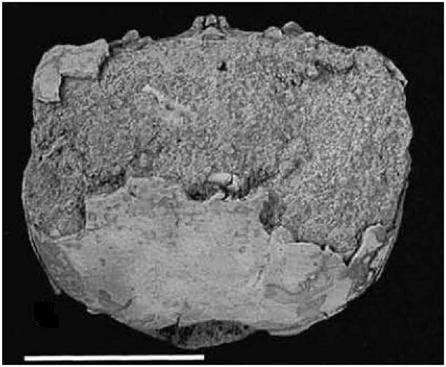Fossil History
Fossil specimens of Ocypode species are rare as the thin exoskeleton of these crabs is easily degraded through biological and geological processes and the body tends to disarticulate in the dynamic beach environment (Portell et al. 2003; Garassino et al. 2010). Examples from Florida date from the upper Pleistocene to the Holocene (Portell et al. 2003) and in Italy from the Pliocene (Garassino et al. 2010). The oldest known species of Ocypode is O. vericoncava from the Miocene that was discovered in Patagonia, Argentina (Casadío et al. 2005) (Fig 1).

Figure 1| Ocypode vericoncava
Bar represents 1 cm.
(After Casadío et al. 2005) |